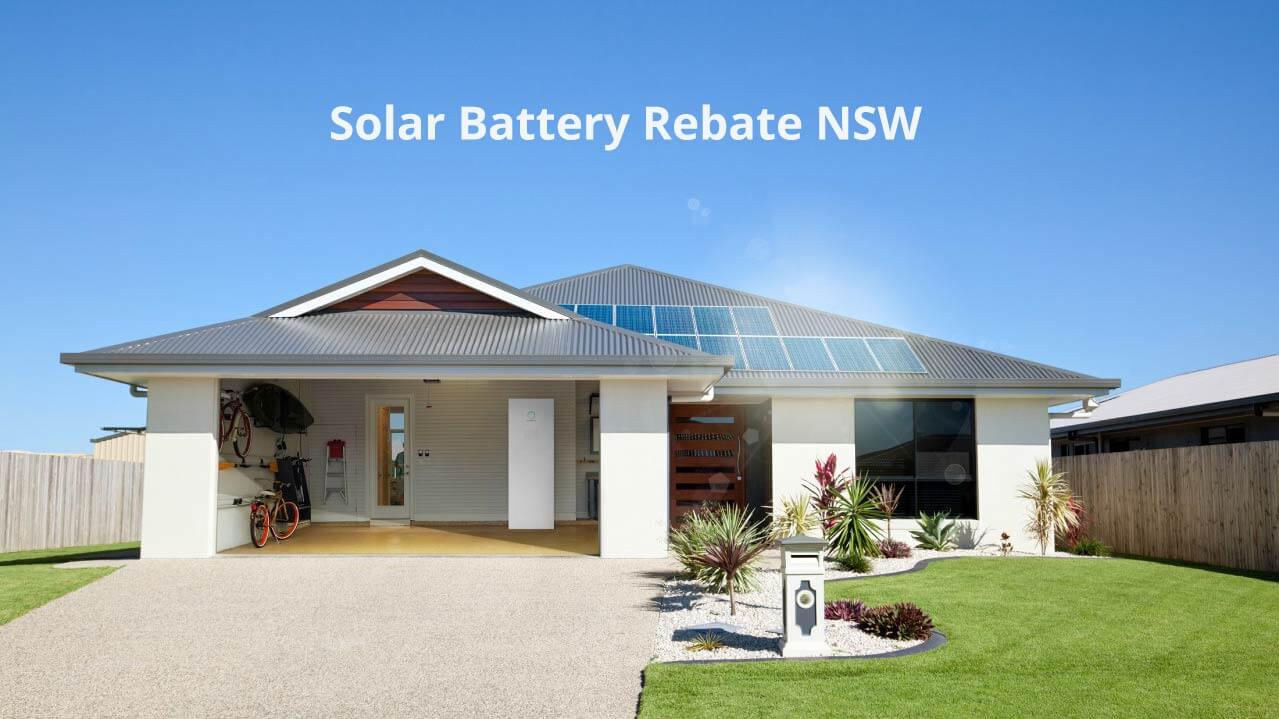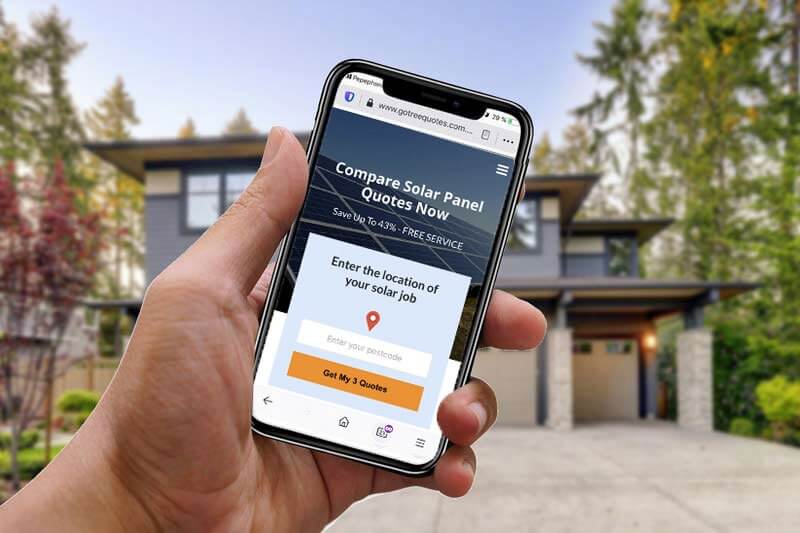Home Solar Battery Storage Solar Battery Rebate NSW Solar Battery Rebate
NSW Solar Battery Rebate: 2024 Guide
The NSW government is targeting a reduction in emissions to net-zero by 2050. As part of this approach, they’re concentrating on increasing the use of solar power. To help homeowners install solar panels, they’ve initiated various rebate programs.
The NSW provides an interest-free loan of up to $14,000 for eligible homes to purchase and install solar batteries in their homes. There is also a $9,000 local for retrofitting a battery to an existing system. It is aimed at homes with existing solar panel systems but does not have solar batteries.
Solar batteries are expensive for many homes to acquire. A rebate program helps many to get the batteries at a discount. NSW also has other rebate programs that make solar power systems more affordable for the residents.

Table of Contents
ToggleInterest-free solar panel and battery loan scheme
Another rebate scheme offered by the NSW government is known as the Empowering Homes program.
In the program, NSW offers eligible residents interest-free loans payable in ten years to purchase and install solar panels and batteries.
How to use the NSW solar loan
NSW has two interest-free loans. There is a $14,000 loan that NSW residents can access to purchase rooftop solar panels and solar batteries. It is payable in eight years.
The second loan available is worth $9,000. It is payable in eight years. Applicants to this loan use it to retrofit existing solar batteries.
Eligibility criteria
- Live in participating postcodes.
- Have an annual household income of less than $180,000.
- You must be the registered owner of the house to install the solar system. You must also live in the house.
- Your home must be connected to grid electricity.
- Pass the credit assessment.
- To qualify for the battery-only loan, you must have an existing solar system that you would like to upgrade.
How to apply for the loan
- Find a Clean Energy Council accredited solar retailer or installer and get a quote.
- Upload your quote to the Plenti portal which will start an eligibility assessment.
- Once the loan is approved, it will be channeled to the solar retailer. You will then pay the remainder of the purchase price and the solar panels will be installed in your home.
Short-term trading certificates solar rebate
How the NSW solar rebate works
- Identify a Clean Energy Council-accredited retailer or installer.
- They will stock or install only accredited solar panels or batteries.
- Ensure that you discuss your power needs with your accredited retailer. You will assess how much electricity you use in your household. From this, you can determine the size of the solar system required.
- The higher your electricity consumption, the larger the solar system you need. Thus, the more solar panels you will purchase.
- The more solar panels you buy, the more STCs you will get.
- How many STCs you get depends on the production capability of the solar system and your location. The more sun your location receives, the higher the production of your solar system and the more STCs you will get.
- STCs are traded in the open market. The value of the STCs on the day of your purchase determines your discount. STCs cost around $35-$40.
- The total amount of discount you get on your solar system purchase is based on the value of STCs and the size of your solar system and the number of STCs you receive. The rebate can save up to 33% of the cost of purchase and installation.
Eligibility
To be eligible to receive STCs when you purchase solar panels, you need to buy from an accredited solar retailer or installer.
If you purchase your panels from an unaccredited installer, you will buy unqualified products.
The number of STCs issued for the size of the solar system reduces every year. The rebate program will end in December 2030.
The rebate program is also open only to NSW residents. Additionally, eligible solar panel customers must be the registered owners of the property where the panels are installed.
Solar feed-in tariffs
In NSW, you can also enjoy feed-in tariffs to help reduce your investment in solar and save on your electricity bills.
To be eligible for this program, your home must be connected to the grid. You must also get into an agreement with an electricity retailer.
The electricity retailer will set up a smart meter to monitor the amount of electricity that you use and the amount of solar power exported to the grid.
A solar feed-in tariff is an amount paid to the owner of the solar panel for exporting solar power to the grid. How much you get depends on your electricity retailer and where you live.
The amount is credited to your electricity account to offset any bill that you may have accrued. ‘
The use of solar reduces your electricity bill. The feed-in tariff lowers the bill even further.
Savings on your electricity bill ensure that you can enjoy your investment in solar. The larger the savings, the faster your return on investment.
Solar feed-in tariffs lower or eliminate your electricity bill. As a result, you can enjoy a faster rate of return on your investment in the solar system.
Solar for low income households rebate program
NSW has designed a program to offer free solar panels to eligible pensioners and low-income households.
It aims to reduce the monthly electricity bills by up to $600 annually for low-income households.
Eligibility
To successfully apply for the NSW free solar panels program, you must meet the following conditions.
- Be a resident of participating regions in NSW.
- Current recipient of the low-income household rebate.
- You must own your house.
- You must not have an existing solar system.
- You must have the following cards;
- a pensioner concession card from the Department of Veteran Affairs or Services Australia
- health care card from Health Australia
- DVA gold card marked with either Disability Pension, Totally And Permanently Incapacitated, War Widow, or War Widower Pension.
- You must have an account with an energy retailer.
How to apply for the free solar scheme
The NSW government has several solar schemes including an interest-free loan program. Visit the government website to apply.
Upload the following documents
- A recent electricity bill to prove that you receive the low-income household rebate.
- Council rates notice as proof of home ownership.
- Image of your concession to prove its validity.
Wait 2-3 months for eligibility checks, verification, and installation of the solar panels.
To receive the free solar panels
Recipients must:
- Agree to forego the low-income rebate for ten years.
- Allow their electricity retailer to send their bills to the NSW government.
- Maintain the solar system itself.
- Notify the government if they move house within the ten years.
- Pay for a smart meter from their electricity retailer.
- Hire an approved installer for their region to install the free solar panel system.
Factors to consider before applying for the NSW interest-free solar loan for solar panels and batteries
- Power consumption. How much power you need every day determines the type of solar system you need. The more electricity you consume, the larger the solar system you need.
- Lifestyle. How long you spend at home determines the suitability of solar power. For people who spend a lot of time at home during the day, solar systems are preferable.
- Location. If you get plenty of sunshine, your solar panels will provide sufficient power. Most of Australia is suitable for the installation of solar systems.
Hire a professional solar installer
Go Solar Quotes is a free tool that allows you to compare quotes from top-voted local installers.
Previous users vote on who was good and who was dodgy, we separate the good from the bad and send your quote request to three top local pros.
- Scroll to the top of the page and enter your postcode.
- Answer a few simple questions about your power needs.
- Three local installers submit a quote.
No hard sales, just honest advice and great prices.

Compare Solar Panel Quotes
Table of Contents
Toggle









